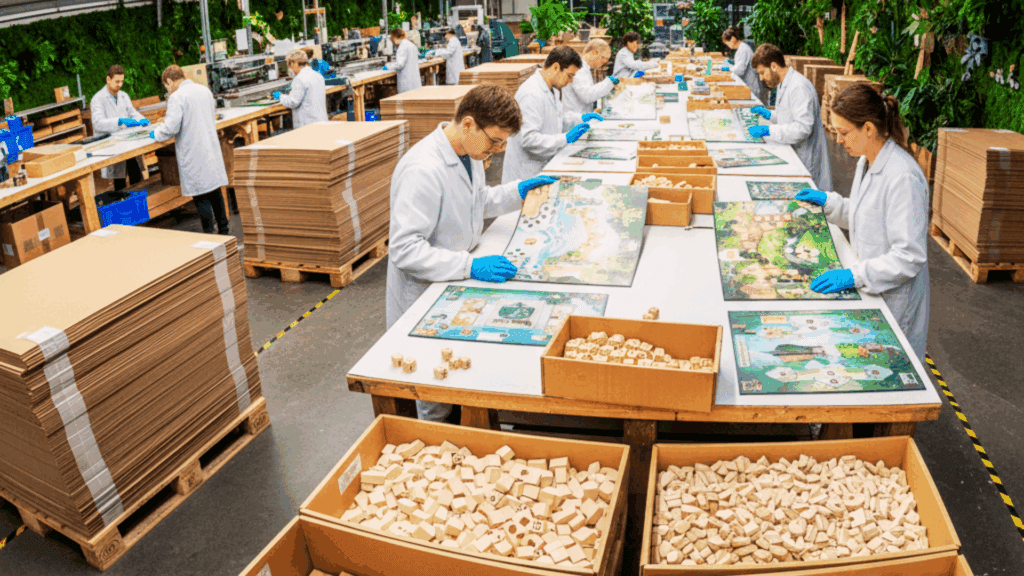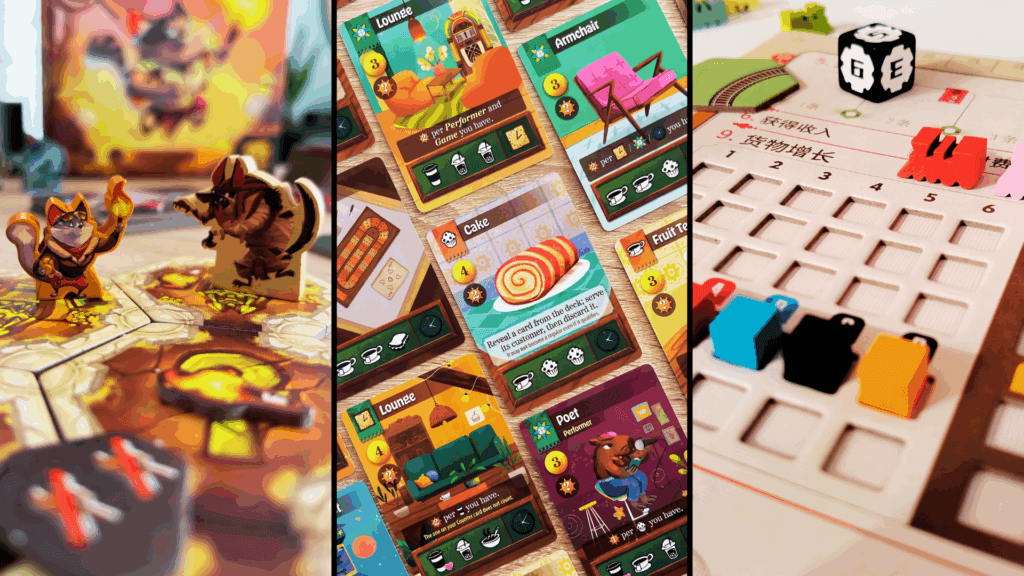

Dive into our insights for publishers & designers!<span data-metadata="">

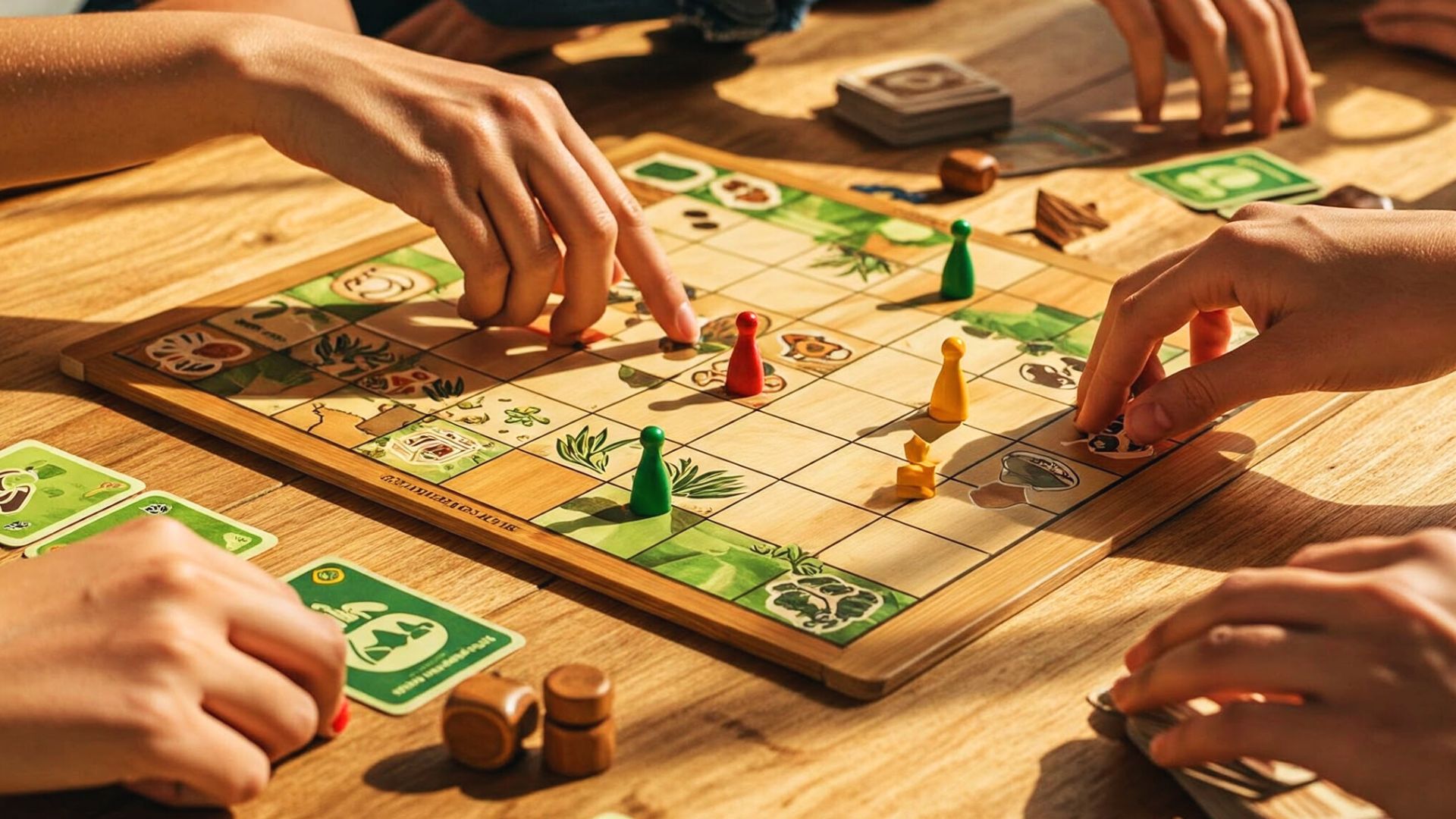
Date: 28/03/2025
Eco-Friendly Board Game Manufacturing: Sustainable Materials & Green Tips 2025
The board game industry is actively seeking ways to lessen its environmental impact, and eco-friendly board game manufacturing is at the forefront of this shift. From biodegradable plastics to recycled cardboard, publishers and designers are innovating with sustainable game components. This article will delve into how these eco-friendly materials and thoughtful design strategies can enhance the sustainability of your games without compromising budget or quality.
Sustainable Materials for eco-friendly board game manufacturing
Choosing the right materials is key to sustainable game components. In the following sections, we will discuss several eco-friendly materials options, including sugarcane fiber boards, bamboo, and bioplastics, outlining their environmental benefits, their performance, their availability from manufacturers in comparison to traditional materials, as well as their cost.
Bagasse Fiber's Role in Sustainable Game Inserts
Sugarcane bagasse is the fibrous pulp leftover from sugar production, and it can be transformed into paper or molded fiber components. It’s an exciting material for board games:
- Environmental Benefits: By utilizing bagasse, an agricultural waste product, sugarcane cardboard reduces deforestation and provides sustainable, biodegradable, and recyclable game inserts with a lower carbon and water footprint compared to virgin wood.
- Durability & Performance: Despite being plant-based, bagasse trays are durable and can securely hold game pieces, dispelling the myth of fragility with proper ‘Tetris-style’ design.
- Cost Comparison: While sugarcane board is currently pricier due to its specialty status and labor-intensive production, its sustainability and potential for economies of scale make it attractive, particularly for eco-conscious projects.
Benefits of Bamboo Over Traditional materials
Bamboo has emerged as a popular symbol of sustainability – it’s one of the fastest-growing plants on the planet and a highly renewable resource. In board game production, bamboo (or other sustainably harvested wood) can replace plastic or non-FSC wood components:
- Environmental Benefits: Bamboo and FSC-certified wood offer eco-friendly game components, growing rapidly, needing no pesticides, and reducing carbon footprint compared to plastic.
- Durability & Performance: Durable bamboo and wood pieces provide a tactile, long-lasting alternative for many game components, except for highly detailed tokens, where fiberboard remains preferred.
- Cost Comparison: Bamboo’s environmental advantages come with a cost premium over standard wood or plastic, stemming from material and manufacturing factors. For budget considerations, rubberwood or strategic bamboo usage for signature components are viable. FSC-certified wood presents a sustainable alternative with a minor cost adjustment for certification.
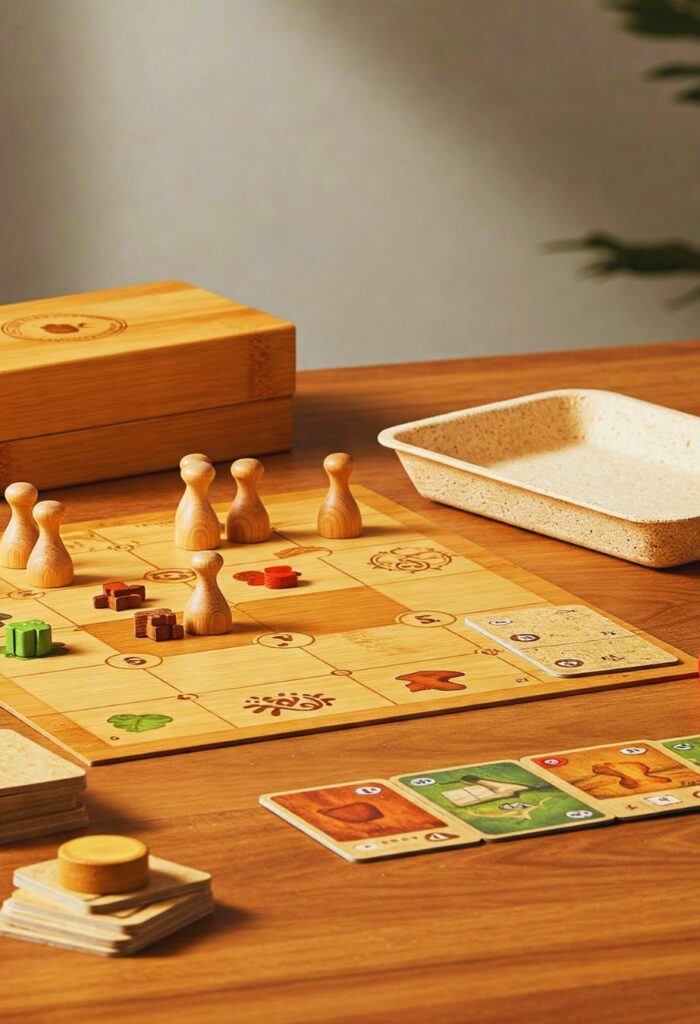
Biodegradable and Bio-Based Plastics: Innovating for Eco-Friendly Board Game Manufacturing
One of the most talked-about innovations in sustainable manufacturing is the advent of biodegradable plastics or bio-plastics. These are plastics derived from renewable biological sources (like corn starch or sugarcane) or conventional plastics blended with biodegradable additives. In board games, they can replace traditional petroleum-based plastics for miniatures, figurines, tokens, and trays:
- Environmental Benefits: Bio-based plastics like PLA offer a sustainable alternative to fossil fuel plastics, with lower carbon footprints and biodegradability. They provide the same functionality for game components, reducing end-of-life pollution, especially for mini-heavy games.
- Durability & Performance: Concerns about bio-plastic durability are largely unfounded; they perform similarly to traditional plastics in games. Biodegradation only occurs under specific conditions, and manufacturers ensure quality for long-lasting components.
- Cost Comparison: Bio-plastics cost more than standard plastics due to material prices and manufacturing adjustments. Expect a 10-20% premium, but consider partial use or marketing benefits to mitigate expenses as costs may decrease with wider adoption.
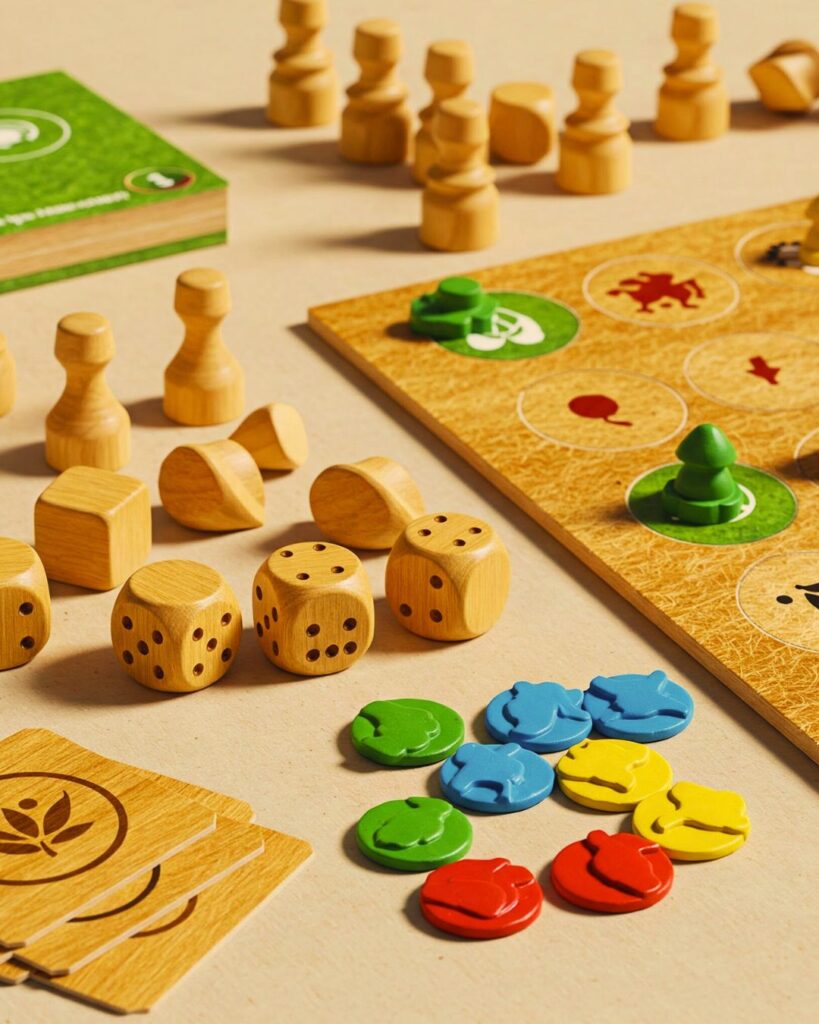
Recycled and Responsibly-Sourced Materials
In addition to new materials like bamboo or PLA, a big part of eco-friendly board game manufacturing is simply using more recycled and certified-sustainable versions of traditional materials. These often strike a good balance between sustainability and cost. Key options include:
- Recycled Paper & Cardboard: Using recycled fiber offers a straightforward sustainability solution for board games. Recycled paper and cardboard reduce environmental impact, are widely available, and generally don’t increase costs. While 100% recycled content might have minor limitations, a mix often maintains quality. Consider FSC-certified options for an added layer of sustainability. A small surcharge for FSC certification is usually required.
- Recycled Plastics: Using recycled plastic in board games, such as recycled ABS for minis or PET for trays, helps reduce the demand for new petroleum-based plastic and gives a second life to waste material. Manufacturers are increasingly adopting recycled content, though it may not always be the most cost-effective option. Recycled plastic can offer a more sustainable alternative for your game components, while still maintaining performance and quality standards.
- Natural Fabrics and Alternatives: Consider alternative materials beyond core components. Cotton or canvas bags for tokens are biodegradable and renewable, reducing plastic waste. Players often appreciate the upgraded feel. While cotton bags cost more, paper envelopes or bags are a cost-effective substitute. Soy-based inks and water-based varnishes are renewable and low in chemicals, offering vibrant, safe printing with less environmental impact.
Moving Forward: Eco-Friendly Board Game Manufacturing as the New Standard
In the realm of eco-friendly board game manufacturing, the power to create a positive impact lies in informed choices. By carefully combining recycled and responsibly sourced materials, such as FSC-certified woods, bagasse, and bio-plastics, you can significantly green your board game production without compromising the aesthetic appeal or gameplay experience. Understanding the unique nuances of each material—from the durability of bamboo to the biodegradability of PLA—empowers game designers and manufacturers to make strategic decisions that align with their sustainability goals. This conscious approach not only reduces the environmental footprint of game production but also resonates with a growing consumer base that values eco-consciousness. Ultimately, the commitment to eco-friendly board game manufacturing is about building a sustainable future for play, where enjoyable and engaging games contribute to a healthier planet.
you might also be interested...
How to Bring Board Games to China: Licensing, Localization, and Market Entry Strategies for Indie Publishers
Learn how to bring board games to China through expert localization, licensing strategy, and integrated manufacturing. A complete guide for...
> Read MoreBoard Games and Stress Relief | How Play Supports Wellbeing
Recent studies show that both board games and role-playing games can reduce stress, improve social connection, and support emotional wellbeing...
> Read MoreWhat Matters Most in Board Game Manufacturing: Cost, Quality, or Sustainability?
Discover how board game publishers weigh cost, quality, and sustainability when choosing a manufacturer.
> Read MoreFrom Worker Placement to Tile Placement: A Guide to the Most Popular Board Game Mechanics
Discover how to design sustainable board game packaging that’s eco-friendly, functional, and cost-effective!
> Read More


